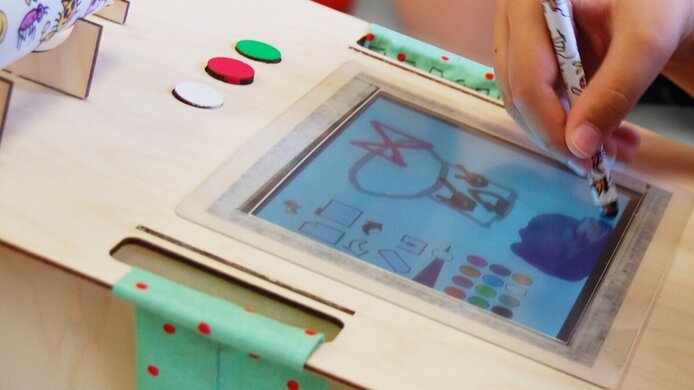Smart objects for people with autism

Autism is a neuro-developmental condition sometimes accompanied by narrow, but fascinating exceptional talents which is a facet often portrayed in popular culture. From a diagnostic point of view, this is a phenomenon with very diverse characteristics. “Autism is as multi-facetted as the people themselves”, explains Christopher Frauenberger from the Vienna University of Technology (TU Wien). “It is usually characterized by three traits: rigid and repetitive patterns of behaviour and thought, deficiencies in social and communication skills. Some of the people affected develop only a limited vocabulary, other have a highly functional language and special talents: "How autism manifests itself in a person's life varies greatly”, explains Frauenberger.
Conventional assistive systems focus on deficits
Frauenberger and his team are particularly interested in children with ASCs. Although there are a number of assistive and learning systems that help primarily with social skills development, they are not a very good match for the children's world in Frauenberger’s opinion. “In our project, we aimed to formulate a fundamental critique of existing assistive systems.” People are often reduced to their shortcomings. “We didn't want to focus on the deficits; we wanted to see the child as a whole and address his or her life-world in a holistic way", says the computer scientist. The FWF-funded project OutsideTheBox, with Frauenberger as principal investigator, was launched to respond to these challenges. In this basic research project, Frauenberger's group worked with nine autistic children to find out how technologies could be meaningful in the children's lives. “We wanted to be largely free from restrictions in terms of the technology used.” The idea to use tablet computers as a basis was considered but rejected. “That would have been a limitation", notes Frauenberger. “The most flexible playground currently available in digital technology is ubiquitous computing”, he specifies. This is the name for computer technology that pervasively integrates into our everyday lives in various forms and shapes. - i. e. smart objects or environments with which we interact. This technology was to serve as a starting point. Frauenberger and his two colleagues had between 12 and 15 meetings with each child over the course of each school year. The results were technologies that could not have been imagined by neuro-typical adult researchers themselves.
Narrative aid for a movie expert
As an example, Frauenberger shares the case of an eight-year-old boy who is a movie buff. "He knows everything about certain movies and is very much at home in this world. He is also an passionate storyteller, but sometimes falters and doesn’t know how to continue. He thought of something that could support him in these moments.” The team designed an object with him that displays images from movies or trailers into the palm of his hand by the means of a small projector. "When his story grinds to a halt, he can press a button and summon images of figures, things or settings from the movies. These cues help him to carry on with the story." This “kaleidoscope”, as Christopher Frauenberger calls it, was for the boy to keep. Another boy, who loves to draw as a way to emotionally regulate himself, has developed a combination of drawing tablet and projector, which enables him to share his drawings with others immediately. All objects developed with the children are described in a newly published design portfolio: http://outsidethebox.at/en/outcomes/design-portfolio The aim of the project was to connect the children with their outside world, says the researcher, and adds: "The objects were designed to be of a technical nature and smart. They should be meaningful in the children's lives and help them to share the positive experiences they have made with others. Those were the only requirements."
Individual developments
“What we did in the project is highly individual, of course", says Frauenberger. The follow-up project, again funded by the FWF, is now trying to open up wider areas of application with the new approaches. The intention was to critique the previous view of assistive systems for people with disabilities and show how things could work differently. “One of the greatest insights gained through the project is that technologies developed in collaboration with people with disabilities look very different from what a non-disabled computer scientist may imagine", states Frauenberger.
Personal details Christopher Frauenberger is a computer scientist for Artificial Intelligence and Human Interfaces. After studying telematics in Graz, he wrote his dissertation in London and conducted research at the University of Sussex and TU Wien. He is interested in novel methods to design technologies for people with disabilities.
Publications





